#king haakon iv
Text







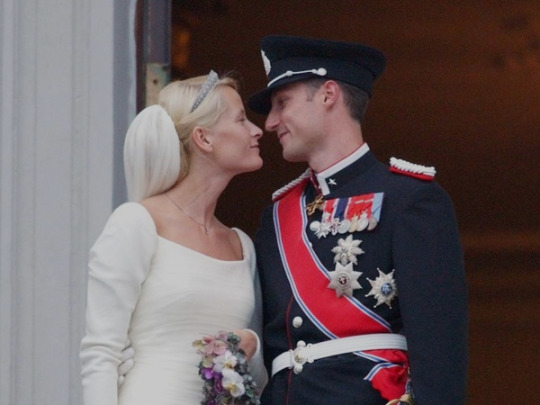










The 𝑩𝑹𝑰𝑫𝑬 & 𝑮𝑹𝑶𝑶𝑴
of (current & future)
𝑲𝑰𝑵𝑮𝑺 & 𝑸𝑼𝑬𝑬𝑵𝑺
Carl Gustaf ♡ Silvia, Victoria ♡ Daniel, Abdullah ♡ Rania, Rajwa ♡ Hussein, Charles ♡ Camilla, Catherine ♡ William, Harold ♡ Sonja, Mette-Marit ♡ Haakon, Frederick ♡ Mary, Margrethe ♡ Henrik, Guillaume ♡ Stephanie, Maria Teresa ♡ Henri, Albert ♡ Charlene, Masako ♡ Naruhito, Willem ♡ Maxima, Mathilde ♡ Philippe, Jetsun Pema ♡ Jigme Khesar, Letizia ♡ Felipe
#& Emperor & Empress#im not confident with all monarchies so if ive got smth wrong please correct me#just an excuse to include Rajwa & Hussein's wedding pics again :) :) :)#my edit#King Carl Gustaf#Queen Silvia#Crown Princess Victoria#Prince Daniel#King Abdullah#Queen Rania#Crown Prince Hussein#Princess Rajwa Al Hussein#King Charles iii#Queen Camilla#Princess of Wales#Prince of Wales#Crown Princess Mary#Crown Prince Frederick#Crown Prince Haakon#Crown Princess Mette-Marit#Queen Sonja#King Harold#Emperor Naruhito#Empress Masako#Queen Jetsun Pema#King Jigme Khesar#Queen Letizia#King Felipe#Queen Margarethe#Queen Maxima
254 notes
·
View notes
Text
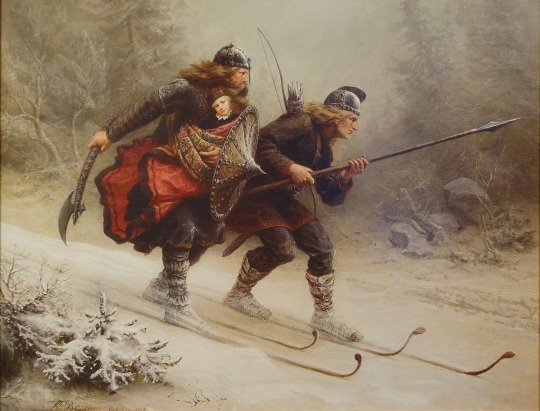
Skiing Birchlegs Crossing the Mountain with the Royal Child
by Knud Bergslien
Depiction of Birkebeiner skiers carrying Prince Haakon to safety during the winter of 1206 has become a national Norwegian icon. The prince grew up to be King Haakon IV whose reign marked the end of the period known as the Civil war era in Norway.
#knud bergslien#skiing#birchlegs#crossing#mountain#cross country#ski#skiers#royal child#royal#child#art#painting#history#europe#european#nordic#norse#prince haakon#winter#snow#norway#norwegian#prince#king haakon iv#ski museum#oslo#holmenkollen#civil war#birkebeiner
548 notes
·
View notes
Text

For the record, I wish Kate well and a speedy recovery for whatever problem she has been admitted to The London Clinic for.
Because I do not believe for one second that she was admitted for "abdominal surgery." That was "planned." And needs to be in the hospital for 10-14 days, even though it's "non-cancerous."

Once you've eliminated surgeries related to cancer, then you've eliminated a whole bunch of surgeries that have long recovery times.
Hernia surgeries don't require three months of "recovery," and in the US, they certainly don't require you to be in the hospital (aka germ factories) for 10-14 days.
I suppose being in the hospital on iv antibiotics for a diverticulitis procedure is a possibility, except that the recovery from any kind of diverticulitis surgery is A LOT LESS than three months.
Easter is on 31 March 2024. Saying she won't do any public duties UNTIL April is two and a half to three months of "recovery."
And no, hysterectomies do not take that long to recover from.
Just ask Camilla.
12 APRIL 2012
The Duchess of Cornwall is to have a hysterectomy, it was announced last night.
Camilla will undergo surgery to remove part or all of her womb at the beginning of next month.
She will spend around four days in hospital then a further six weeks recovering.
The 59-year-old duchess will still go on a ten-day visit to the Gulf states with Prince Charles, beginning next Monday.
It is thought royal gynaecologist Marcus Setchell will carry out the operation at the private King Edward VII Hospital for Officers in London soon after she returns. She has cancelled a string of engagements.
That's right.
Clarence House announced when Camilla would be out of the public eye BEFORE the surgery happened. Not after she was admitted to the hospital.
Somehow Kate's "abdominal surgery" was "planned," yet William's entire schedule needs to be reworked all of the sudden? As in, announcing today that he needs to not do any public duties for a certain period of time until Kate is okay at home. Hey, it's not as if Kate has two parents who are retired. Two siblings. Other relatives. Or a nanny. Housekeeper. Other staff. Etc.
Because if this really was a "planned" surgery and not a sudden emergency, then why were KP comms teams leaking a trip to Rome less than a month ago?

And Russell Myers was leaking that Will & Kate were going to go abroad to visit the British military LAST WEEK???

Someone isn't being honest about what is going on, and it's definitely not me.
It sounds to me that The Princess of Wales had a nervous/mental breakdown and needed to be hospitalized. Except that they can't say that, so they're going with "planned" "abdominal surgery."
Because if it really was "planned" and not cancerous, then why wouldn't William be able to do an engagement here or there over the next few weeks? If the KP comms team is going to pretend that this is just a routine surgery--not urgent or emergent--then why is their behavior NOT matching the statements?
Crown Prince Haakon does engagements even when his wife, Crown Princess Mette-Marit, has been ill.
Prince Albert works even when Princess Charlene has been ill.
But William's ENTIRE schedule needs to be reworked even though Kate's parents are retired and she has two siblings nearby and other friends and relatives? (And and other helpers...)
Yup. There is another announcement coming soon.
Not one that anyone else in the world is expecting--well, except for @mysteriouslytransparentwitch and myself.
It's that Dragon energy already coming in even though the lunar new year doesn't start until 10 February. That Green Dragon is bringing lots of surprises with it.
Super cold in the USA. Volcanic eruptions in an area of Iceland that hadn't had anything in 800 years.
And Princess Basement Baby!
Because Wales fandom ARMAGEDDON is almost upon us.
And is the Wales fandom prepared for it? Nope.

#my gif#2024: Year of the Wood Dragon#kate middleton#Catherine The Princess of Wales#pr games#pr fail#scandal!#ESCANDALO!!!#Prince & Princess OWN GOALS#William The Terrible#prince william#William The Prince of Wales#british royal family#Wales fandom ARMAGEDDON#Wales fans are CHUMPS#twitter#rebecca english#Wales kid number FOUR#princess basement baby#Queen Camilla#duchess camilla
29 notes
·
View notes
Text
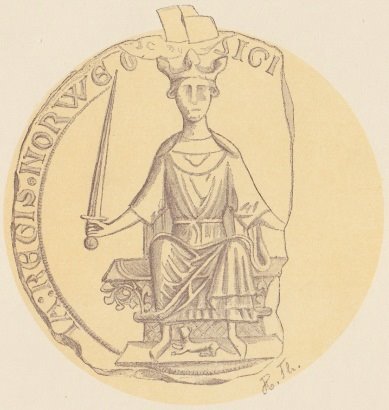

On December 16th 1263 the Norwegian king, Haakon the Old, died in the Bishop's Palace, Kirkwall, Orkney.
In early 1263 Scots forces of King Alexander III mounted raids on the Norwegian territories in the Outer Hebrides. Håkon IV responded in July of that year by arriving in the Firth of Clyde with a large invasion force. This took control of the Isle of Bute, capturing Rothesay Castle. What followed was a standoff between Alexander III and Håkon IV, with Alexander negotiating and playing for time in the hope that bad weather would disrupt the Norwegian fleet. This duly arrived on the night of 30 September 1263, driving part of Håkon's fleet ashore on the Scottish mainland at Largs and sinking a number of his ships.
A series of skirmishes broke out on the beach at Largs, and Håkon landed more of his ships to assist those that had been beached. The Norwegians then withdrew on hearing of the approach of a large Scottish army, and retreated to overwinter in Orkney before resuming their campaign the following Spring. But Håkon fell ill and died while staying at the Bishop's Palace in Kirkwall. On his deathbed he appointed his son Magnus as his successor. Håkon IV was buried in St Magnus Cathedral in Kirkwall over the winter, then his body was taken for burial in Bergen Cathedral.
The first picture is a sketch of King Haakons seal dated 15248/49, the second is of Haakon and Skule Bårdsson, Norwegian nobleman and claimant to the royal throne against Hakon from the 14th century Icelandic Flateyjarbók, an important medieval Icelandic manuscript.
16 notes
·
View notes
Photo

Princess Josefina of Norden, Dowager Queen of Alland (1761-present)
Princess Josefina was born in 1761 at the Brunsbuttel Palace to Karl Duke of Norden and Princess Helene of Vasa. She was the eldest surviving daughter of the royal couple who suffered multiple miscarriages in the previous years. Josefina was raised at the royal court in Brunsbuttel which was highly sophisticated and evolved to become one of the most splendid courts in the continent. Josefina was very close to her older brother Wilhelm whom she shared a governess with in her youth. Josefina would be joined by four more sisters, being especially close with her twin sisters Princess Maria Theresa and Princess Paulina. Josefina learned six languages and became skilled in the piano, the harp, the flute, and the clarinet. In 1776, Josefina was married to King Oscar IV of Alland in a grand ceremony. The match was arranged by her cousin, King Charles XII of Vasa to cement an alliance between the neighboring country. Josefina was destined to become an amazing consort and a leading lady at court. Josefina was not particularly close to her husband Oscar but she had ambitions of her own which she sought to achieve by whatever means necessary. She ended up having tremendous political influence over her husband. She was said to have influenced her husband to allow women to serve in public offices as well as to have the right to vote for their leaders in the Alland Parliament. In 1779, she gave birth to Crown Prince Charles of Alland who would later become King Charles III. Josefina would have two more successful pregnancies, giving birth to Princess Maria Eleanora who would become the Queen Consort of Vasa, and Princess Josefina Luise Landgravine of Ansbach. Josefina influenced her husband to join Norden, Wardenburg, and Augustinia in the Second Calais War, providing aid in troops and arms. Josefina was a very controlling mother, causing a strain between her and her children in the future. In 1790, Josefina suffered a fatal miscarriage and was bedridden for five months. Oscar and his sister Maria Amalia helped nurse Josefina back to health during this difficult time, causing the couple to become closer. In 1797, Josefina’s son, Charles, was married to Princess Louise of Wardenburg, the eldest daughter of the King of Wardenburg. This marriage cemented an alliance between the two countries who were historically opposed to each other for a century. Charles and Louise would have three children, Prince Oscar, Princess Amalia, and Prince Haakon. In 1796, Maria Eleanora was married to the twice widowed King Charles XII of Vasa. Maria Eleanora was heavily opposed to the marriage and loathed the older king. Maria Eleanora begged her father to call off the betrothal but he refused. Maria Eleanora would blame her mother for the rest of her life for the loveless marriage that she would endure. Josefina’s daughter, Josefina Luise whom she had named after herself, was married to Rudolf the Landgrave of Ansbach. Rudolf and Josefina Luise had a much happier marriage and had grown up to love her mother unlike her two older siblings. In 1804 tragedy struck when King Oscar died, leaving Josefina a widow. Josefina, instead of mourning, decided to bury herself into political work by trying to influence and assist her son. The new King Charles of Alland would not budge, and resisted her help. Josefina took very much offense to this, and started to snub her daughter in law the new Queen by not inviting her to society events. Throughout Josefina’s life she remained close to her sisters Paulina, Louise, Maria Theresa, and Viktoria. After the death of Maria Theresa she was devastated and traveled all the way to Porto to be there for her sister’s widower. Josefina always cared for her sister Viktoria and was saddened by her marriage as she hated Prince Heinrich for his poor status. Josefina like the rest of her siblings helped Viktoria financially and sent funds to renovate Schloss Rostock. Josefina became the godmother to Viktoria’s eldest daughter, Princess Sophie who is the prospective bride to the Tsarevich of Beloshov. Josefina remains a revered figure in Eusalia due to her overbearing political influence over her husband which has helped Alland become more involved in the affairs of the main continent.
#SophieOfRostock#SOR#sims 4#the sims#s4#sims 4 royalty#royals#royalty#ts4 royals#history#the sims 4 history#historical#ts4 history#s4 history#sims 4 historical#edit#ts4#sims 4 royals#royal#historical royalty
79 notes
·
View notes
Text
Events 11.25 (before 1920)
571 BC – Servius Tullius, king of Rome, celebrates the first of his three triumphs for his victory over the Etruscans.
1034 – Máel Coluim mac Cináeda, King of Scots, dies. His grandson, Donnchad, son of Bethóc and Crínán of Dunkeld, inherits the throne.
1120 – The White Ship sinks in the English Channel, drowning William Adelin, son and heir of Henry I of England.
1177 – Baldwin IV of Jerusalem and Raynald of Châtillon defeat Saladin at the Battle of Montgisard.
1343 – A tsunami, caused by an earthquake in the Tyrrhenian Sea, devastates Naples and the Maritime Republic of Amalfi, among other places.
1400 – King Minkhaung I becomes king of Ava.
1487 – Elizabeth of York is crowned Queen of England.
1491 – The siege of Granada, the last Moorish stronghold in Spain, ends with the Treaty of Granada.
1510 – Portuguese conquest of Goa: Portuguese naval forces under the command of Afonso de Albuquerque, and local mercenaries working for privateer Timoji, seize Goa from the Bijapur Sultanate, resulting in 451 years of Portuguese colonial rule.
1596 – The Cudgel War begins in Finland (at the time part of Sweden), when peasants rebel against the imposition of taxes by the nobility.
1667 – A deadly earthquake rocks Shemakha in the Caucasus, killing 80,000 people.
1678 – Trunajaya rebellion: After a long and logistically challenging march, the allied Mataram and Dutch troops successfully assaulted the rebel stronghold of Kediri.
1755 – King Ferdinand VI of Spain grants royal protection to the Beaterio de la Compañia de Jesus, now known as the Congregation of the Religious of the Virgin Mary.
1758 – French and Indian War: British forces capture Fort Duquesne from French control. Later, Fort Pitt will be built nearby and grow into modern Pittsburgh.
1759 – An earthquake hits the Mediterranean destroying Beirut and Damascus and killing 30,000–40,000.
1783 – American Revolutionary War: The last British troops leave New York City three months after the signing of the Treaty of Paris.
1795 – Partitions of Poland: Stanisław August Poniatowski, the last king of independent Poland, is forced to abdicate and is exiled to Russia.
1826 – The Greek frigate Hellas arrives in Nafplion to become the first flagship of the Hellenic Navy.
1833 – A massive undersea earthquake, estimated magnitude between 8.7 and 9.2, rocks Sumatra, producing a massive tsunami all along the Indonesian coast.
1839 – A cyclone slams into south-eastern India. An estimated 300,000 deaths resulted from the disaster.
1863 – American Civil War: Battle of Missionary Ridge: Union forces led by General Ulysses S. Grant break the Siege of Chattanooga by routing Confederate troops under General Braxton Bragg at Missionary Ridge in Tennessee.
1864 – American Civil War: A group of Confederate operatives calling themselves the Confederate Army of Manhattan starts fires in more than 20 locations in an unsuccessful attempt to burn down New York City.
1874 – The United States Greenback Party is established as a political party consisting primarily of farmers affected by the Panic of 1873.
1876 – American Indian Wars: In retaliation for the American defeat at the Battle of the Little Bighorn, United States Army troops sack the sleeping village of Cheyenne Chief Dull Knife at the headwaters of the Powder River.
1905 – Prince Carl of Denmark arrives in Norway to become King Haakon VII of Norway.
1908 – A fire breaks out on SS Sardinia as it leaves Malta's Grand Harbour, resulting in the ship's grounding and the deaths of at least 118 people.
1912 – Românul de la Pind, the longest-running newspaper by and about Aromanians until World War II, ceases its publications.
1915 – Albert Einstein presents the field equations of general relativity to the Prussian Academy of Sciences.
1917 – World War I: German forces defeat Portuguese army of about 1,200 at Negomano on the border of modern-day Mozambique and Tanzania.
1918 – Vojvodina, formerly Austro-Hungarian crown land, proclaims its secession from Austria-Hungary to join the Kingdom of Serbia.
0 notes
Text
Picture Book Historical Nonfiction: A Bear Far from Home
Picture Book Historical Nonfiction: A Bear Far from Home @anneschwartzbks
A Bear Far From Home, by Susan Fletcher/Illustrated by Rebecca Green, (Sept. 2022, Anne Schwartz Books), $18.99, ISBN: 9780593181898
Ages 4-8
Inspired by the bear in King Henry III’s royal menagerie, A Bear Far from Home is a heart-aching story that imagines the life of the white bear given to Henry by King Haakon IV of Norway in the thirteenth century. Using letters and official documents,…

View On WordPress
#A Bear Far from Home#animals#Anne Schwartz Books#bears#history#polar bears#Rebecca Green#Susan Fletcher
1 note
·
View note
Text
I’m just going to have to apologise to all the dead people who were hurt by thirteenth century kings because having made several attempts it is clearly impossible for me to give a sense of their achievements without sounding like I’m a fan and condone massacres in the name of expansionism
#Right so the Scotland that managed to survive the Wars of Independence was to some extent created by the thirteenth century kings#And their expansion and consolidation of their realm is impressive by the standards of their time#But like also#They were really nasty about some things#How to say 'Wow Alexander II was a formidable monarch' without making it sound like I totally approve of baby-slaughtering and mutilation#How to say 'Alexander III- while not the author of a Golden Age- WAS a pretty competent monarch and presided over a stable kingdom'#without sounding like I'm ignoring the earl of Ross burning up Skye in 1262#Knowing that Haakon IV and Edward I had similar expansionist aims doesn't help#And like it wasn't usually (except against hte Jewish pop. in Edward I's case) as ethnically motivated as in later centuries#At least in Scotland#But still
3 notes
·
View notes
Photo










List of the kings of Norway (III)
#kings of norway#olaf iv#sigurd magnusson#sigurd I#magnus the blind#magnus iv#harald iv#sigurd ii#inge the hunchback#inge I#eynstein II#magnus v#haakon#fancast#edit#gifs not mine to claim#gifs on google#purpose of knowledge only
0 notes
Text


➺ The Oath · Part. 2
Pairing: Lagertha x Chieftain!reader
Summary: You are the chieftain of a primitive Viking tribe of the North of Norway and your men and you want to fight alongside Bjorn and his brothers against King Aelle’s army. A few years later, you return to take Lagertha's side in the battle against Ivar.
➺ If only I had protected you · Part. 2 · Part. 3 ~ Updated every 36 of the month.
Pairing: Bjorn x reader / Harald Finehair x reader
Summary: After spending six years away from Norway, Ragnar's quest is the perfect opportunity to return to a normal life.
➺ Link · Part. II · Part. III · Part. IV · Part. V · Part. VI · Part. VII · Part. VIII
Pairing: Ragnarssons x sister!reader
Summary: Being Ragnar's daughter is not always an easy thing.
➺ Queen of the Isles ~ Hiatus
Pairing: Ragnarssons x reader
Summary: As the daughter of the chief of Hjaltland, when the sons of Ragnar arrived on your island, you took the chance to become someone else.

➺ My King
Pairing: Ivar x reader
Summary: You are a respected shieldmaiden from Kattegat and when the time came, you make the decision of following Ivar instead of Lagertha.
➺ Love is Blind
Pairing: Sigurd x blind!reader
Summary: Your mother is trying to get you to marry one of Aslaug’s sons without your secret getting out.
➺ Hope is everything
Pairing: Harald x Ragnar's daughter!reader
Summary: A simple discussion about hope.
➺ Playing in the snow
Pairing: Young!Ragnarssons x sister!reader
Summary: You just wanted to make a snowman with your brothers.
➺ Iron Mask
Pairing: Rollo x niece!reader / Bjorn x sister!reader
Summary: After having disappeared during the second attempt to siege Paris, you are finally reunited with part of your family.
➺ Maternal Instinct
Pairing: Young!Sigurd x sister!reader
Summary: You go mushroom picking with your little brother Sigurd.
➺ Privileges
Pairing: Ivar x sister!reader
Summary: You're definitely Ivar's favorite.
➺ Not just a matter of age
Pairing: Ragnar x daughter!reader
Summary: You want to accompany your father to Paris but he is definitely against this idea.
➺ The confidante of power
Pairing: Ragnarssons x reader
Summary: After Baldr is born, Ivar forces you to do something that will change your life completely.


➺ The Saxon Pride
Pairing: None
Summary: As the daughter of an Ealdorman, you must find a way to face the army of King Canute.

➺ Imagine being Ragnar's descendant in Canute's army

➺ Being Jarl Haakon's daughter
93 notes
·
View notes
Photo

King Haakon VII, Queen Maud and Crown Prince Olav.
Olav was the only child of King Haakon VII of Norway and Maud of Wales. He became heir apparent to the Norwegian throne when his father was elected King of Norway in 1905. He was the first heir to the Norwegian throne to be brought up in Norway since Olav IV in the fourteenth century, and his parents made sure he was given as Norwegian an upbringing as possible. In preparation for his future role, he attended both civilian and military schools...
20 notes
·
View notes
Text
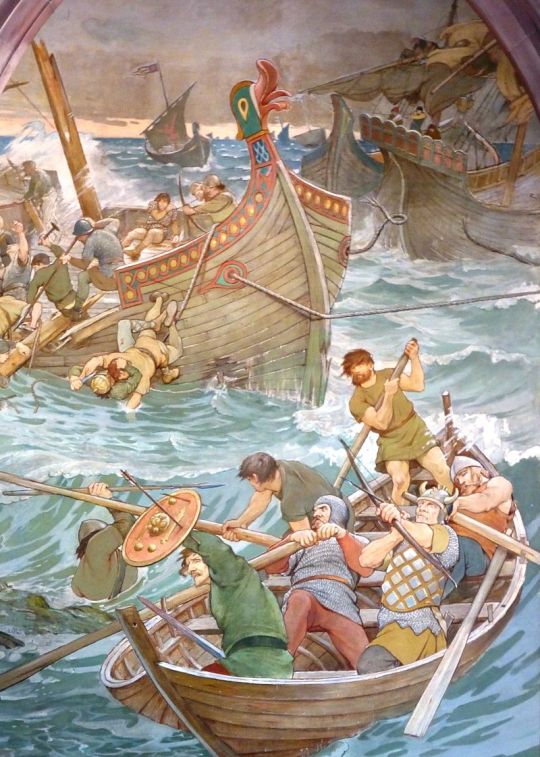

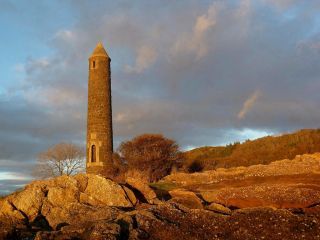
2nd October 1263 saw The Battle of Largs.
Before I go into the full details it is thought that anywhere between 1200 and 2,000 ships set sail from Norway to vanquish the Scots, can you imagine how they would have looked sailing round the islands on the West coast? It must have been an amazing, if frightening sight!
Many writers have said that The Scots won this battle against the Norse army of Haakon the Old of Norway, but a lot of historians agree there was no clear winner on the day, in fact the battle may have lasted several days, Scotland however took advantage of circumstances when King Haakon died in December, it would eventually mean the end of Viking influence over the west of Scotland.
The Battle of Largs also gave rise to the legend of how Scotland's national flower, the thistle came about.
When the Vikings had first begun raiding across the North Sea 400 years earlier, there had been no king of Norway and no king of Scotland. Their often savage raids evolved over time into trade and settlement. By the early 1200s both countries were united under powerful and ambitious kings.
When you hear of the Hebrides most only think of the Western Isles, the Outer Hebrides, and maybe Skye but the region known as Innse Gall also included islands such as Bute and Cumbrae on The Clyde estuary, very close to the Scottish mainland. Isle of Man, Shetland and Orkney Isles were also held by the Norsemen.
Haakon IV and Alexander II of Scotland were born within a few years of each other and came to the throne around the same time. They both were ambitious and were keen to extend and maintain their Kingdoms. It was Bute and Cumbrae that Alexander II had his eyes on. Alexander however had died on Kerrera of fever after sailing the west coast with a powerful fleet in 1249 in order to meet the Norwegians in battle.
Things calmed down for a while, probably due to the new Scottish King, Alexander III being a young boy when acceding to the throne, partly due to a struggle for the Scottish throne that included the Comyns and Mac Williams.
By 1263 the infighting was over and matters turned once more to pushing for control of The Hebrides. The dispute with the Alexander III over the Hebrides induced Haakon to undertake an expedition to the islands. Having learned in 1262 that Scottish nobles had raided the Hebrides and that Alexander III planned to conquer the islands, Haakon went on an expedition with his formidable "leidang" fleet of at least 120 ships in 1263, having become accustomed to negotiating backed by an intimidating fleet. The fleet left Bergen in July, and reached Shetland and Orkney in August where they were joined by chieftains from the Hebrides and Man. Negotiations were started by Alexander following Norwegian landings on the Scottish mainland, but were purposely prolonged by the Scots.
The 59-year-old Norwegian king - an old man by the standards of the day - took personal command of the fleet. For Haakon, this was unfinished business. The chance to crush Scottish ambitions in the Hebrides once and for all.
In Orkney, a Viking stronghold, his already powerful fleet was joined by local forces. Haakon led his fleet through the Hebrides, island by island, demanding allegiance.
By the time he reached the disputed territories of the Clyde, he had 120 ships and up to 20,000 men at his command. It was a force that would have rivalled the Spanish Armada of 300 years later.
Alexander, based down the coast in Ayr, knew he could not defeat Haakon at sea but if he could stall long enough then the autumn weather might do what his forces could not.
Haakon sent envoys to demand Alexander withdraw his claims but the Scottish king spun out the negotiations.
On 1 October 1263 the weather broke.
The storm was so sudden and so powerful that survivors could only imagine it had been conjured up by sorcery. Haakon's fleet was scattered, with several ships driven ashore under the noses of local militia.
The next morning Haakon managed to get onshore with 1,000 men to salvage the ships and their cargo. That was when the Scots pounced.
Haakon's bodyguard got the king back to the safety of the fleet but on the shore the Norsemen were collapsing in disarray. Finally a long ship managed to get ashore to reinforce the beleaguered rearguard and the Norsemen made a stand.
The Battle of Largs petered out into a long distance and sporadic shooting match. Neither side had won. There was no decisive victory, just the usual grim reckoning in warfare.
But if the skirmish fought on the Clyde coast did not decide anything, the aftermath would.
The Norse king's options were limited. Winter was approaching, his supplies were low and his men were getting restless.
He agreed to disperse the fleet and spend the winter in Orkney. He would return in the spring to have his bloody revenge on Alexander.
But Haakon did not see the spring. He died in Orkney on 16 December 1263.
He was the last Norwegian king to mount a military assault on Scotland.
His son Magnus the Lawmender was not interested in continuing the fight and just three years later he gave up the Hebrides and the Isle of Man to Scotland, in return for 4,000 marks in silver and an annual payment, under the Treaty of Perth.
At the same time the Scots recognised Norwegian rule over Shetland and the Orkney Islands.
Now to the thistle, legend has it that at some point during the invasion the Norsemen tried to surprise the sleeping Scottish Clansmen. In order to move more stealthily under the cover of darkness the Norsemen removed their footwear. But as they crept barefoot they came across an area of ground covered in thistles and one of Haakon’s men unfortunately stood on one and shrieked out in pain, thus alerting the Clansmen to the advancing Norsemen.
The Largs Pencil monument, in the third pic, is a memorial to the battle.
9 notes
·
View notes
Text

Birkebeinerne på Ski over Fjeldet med Kongsbarnet/Skiing Birchlegs Crossing the Mountain with the Royal Child. Knud Bergslien.
The painting depicting Birkebeiner skiers carrying Prince Haakon to safety during the winter of 1206 has become a national Norwegian icon. The prince grew up to be King Haakon IV whose reign marked the end of the period known as the Civil war era in Norway.
2 notes
·
View notes
Text
Events 11.18 (before 1930)
326 – The old St. Peter's Basilica is consecrated by Pope Sylvester I.
401 – The Visigoths, led by king Alaric I, cross the Alps and invade northern Italy.
1095 – The Council of Clermont begins: called by Pope Urban II, it led to the First Crusade to the Holy Land.
1105 – Maginulfo is elected Antipope Sylvester IV in opposition to Pope Paschal II.
1210 – Pope Innocent III excommunicates Holy Roman Emperor Otto IV for invading the Kingdom of Sicily after promising to recognize papal control over it.
1302 – Pope Boniface VIII issues the Papal bull Unam sanctam, claiming spiritual supremacy for the papacy.
1421 – St Elizabeth's flood: A dike in the Grote Hollandse Waard in the Netherlands breaks, killing about 10,000 people.
1493 – Christopher Columbus first sights the island now known as Puerto Rico.
1601 – Tiryaki Hasan Pasha, an Ottoman provincial governor, routs the Habsburg forces commanded by Archduke Ferdinand II of Austria who were besieging Nagykanizsa.
1626 – The new St. Peter's Basilica in Rome is consecrated.
1730 – The future Frederick the Great of Prussia is granted a pardon by his father and is released from confinement.
1760 – The rebuilt debtors' prison, at the Castellania in Valletta, receives the first prisoners.
1803 – The Battle of Vertières, the last major battle of the Haitian Revolution, is fought, leading to the establishment of the Republic of Haiti, the first black republic in the Western Hemisphere.
1809 – In a naval action during the Napoleonic Wars, French frigates defeat British East Indiamen in the Bay of Bengal.
1812 – Napoleonic Wars: The Battle of Krasnoi ends in French defeat, but Marshal of France Michel Ney's leadership leads to him becoming known as "the bravest of the brave".
1863 – King Christian IX of Denmark signs the November constitution that declares Schleswig to be part of Denmark. This is seen by the German Confederation as a violation of the London Protocol and leads to the German–Danish war of 1864.
1867 – An earthquake strikes the Virgin Islands, triggering the largest tsunami witnessed in the Caribbean and killing dozens.
1872 – Susan B. Anthony and 14 other women are arrested for voting illegally in the United States presidential election of 1872.
1883 – American and Canadian railroads institute five standard continental time zones, ending the confusion of thousands of local times.
1901 – Britain and the United States sign the Hay–Pauncefote Treaty, which nullifies the Clayton–Bulwer Treaty and withdraws British objections to an American-controlled canal in Panama.
1903 – The Hay–Bunau-Varilla Treaty is signed by the United States and Panama, giving the United States exclusive rights over the Panama Canal Zone.
1905 – Prince Carl of Denmark becomes King Haakon VII of Norway.
1909 – Two United States warships are sent to Nicaragua after 500 revolutionaries (including two Americans) are executed by order of José Santos Zelaya.
1910 – In their campaign for women's voting rights, hundreds of suffragettes march to the British Parliament in London. Several are beaten by police, newspaper attention embarrasses the authorities, and the march is dubbed Black Friday.
1916 – World War I: First Battle of the Somme: In France, British Expeditionary Force commander Douglas Haig calls off the battle which started on July 1, 1916.
1918 – Latvia declares its independence from Russia.
1928 – Release of the animated short Steamboat Willie, the first fully synchronized sound cartoon.
1929 – Grand Banks earthquake: Off the south coast of Newfoundland in the Atlantic Ocean, a Richter magnitude 7.2 submarine earthquake, centered on the Grand Banks, breaks 12 submarine transatlantic telegraph cables and triggers a tsunami that destroys many south coast communities in the Burin Peninsula.
0 notes
Photo

Blazon: Gules a lion rampant crowned, bearing an axe or bladed argent
Happy Norwegian Constitution Day! Today commemorates the signing of the Norwegian Constitution in 1814. While Norway did have to enter the Union of Sweden and Norway after their defeat in the Campaign Against Norway, the constitution helped ensure that it remained at least partly its own state. With - you know why we’re here - its own coat of arms!
Norway’s coat of arms is up there with the German eagle in terms of “longest use.” There are contemporary sources that show Norwegian kings using a lion rampant (for a somewhat loose definition of “lion”) in the mid-thirteenth century - certainly in 1247 - 1248, possibly as far back as 1225. The golden crowned lion on a red field was used by the House of Sverre, who ruled Norway until 1319, when the house of Folkung (also called Bjälbo) took over. The final Sverre monarch, Haakon V, had no male children, but his daughter Ingeborg had a son, who inherited the throne when Haakon died. That son, Magnus IV and VII, was the first king to hold Sweden and Norway in personal union; however, despite several personal-union combinations of various Scandinavian nations through the centuries, the Norwegian arms themselves don’t seem to have been affected. Various kings placed them in various quarters or on escutcheons of pretense, but the link between the country of Norway and the lion-and-axe was already well-established.
Speaking of the axe, it was most likely added to the arms around 1280, and was certainly there by 1295. It symbolizes Olaf II, who reigned from 1015 through 1028. His history has been somewhat corrupted by his legend (but the legend is probably more fun anyway.) He unified a significant amount of the peninsula, converted to Roman Catholicism in Normandy, including a baptism in Notre Dame, and (probably didn’t really) lead an attack on Anglo-Saxon England that destroyed London Bridge. However, he was driven into exile in 1029 when Cnut the Great invaded. Olaf made a brief, abortive attempt at a reconquest, but died in battle in 1030. He was canonized shortly after his death, becoming St. Olaf, and patron saint of Norway. He is often depicted with an axe, which, according to legend, is the weapon that killed him. The depiction of the axe varies; the long-handled poleaxe or halberd was most common during the early sixteenth century through 1844. Oscar I authorized a redesign of the arms in that year which returned to the shorter-handled battleaxe of the medieval period.
Mercifully, Norway escaped both the Napoleonic and Soviet varieties of unfortunate heraldic design, so I get to wrap things up here without inflicting those upon your eyes. Congratulations on 206 years of having a constitution, Norway!
9 notes
·
View notes
Photo

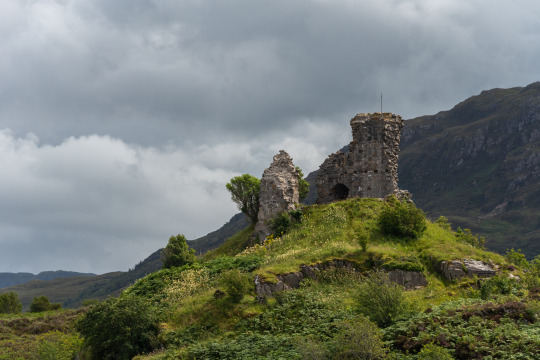

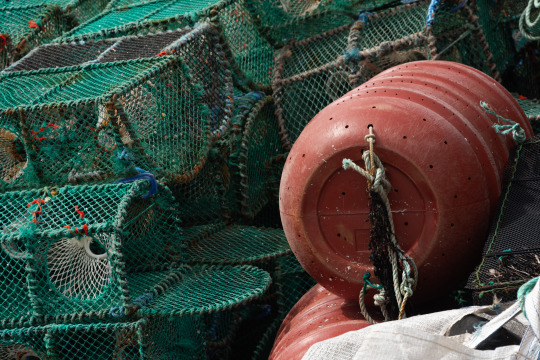
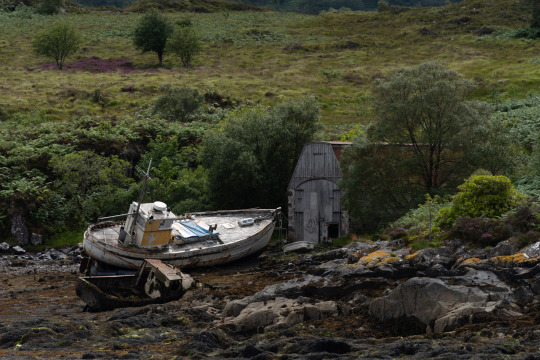





Kyleakin (in Gaelic ‘Caol Àcain’) gets its name from the strait of Kyle Akin: a stretch of water at the entrance of Loch Alsh. Kyle means a narrow, strait of water. The name Akin likely comes from Acain, deriving from the name Haakon after King Haakon the IV of Norway who, supported by Gaelic forces from the Western Isles, anchored his fleet in Kyleakin prior to the battle fought against the Scottish King Alexander III, at Largs in 1263 AD. Another possible origin of Acain is that it is derived from Acunn, a Celtic mythological figure who’s legend has it that he, and his brother Riadh lived happily alongside each other in two towers, then one cold day Riadh stole a burning peat from Acunn’s tower to warm up his own. Acunn and Riadh had a terrible fight resulting in them scattering stones all over the bay of Glenelg. Castle Moil, now a ruin, was a fortress built in the late 15th century allegedly for a Norwegian princess known as 'Saucy Mary'. Princess Mary had imposed a toll for boats crossing the site and used a chain slung from the castle to the mainland to ensure their adherence. Once the crew had paid their toll, the princess would bare her breasts (maybe even give them a jiggle), hence the nickname 'Saucy Mary'.
#kyleakin#Caol Àcain#Saucy Mary#Castle Moil#Acunn and Riadh#fortress#norwegianprincess#lochalsh#KingHaakon iv#Kyle Akin#mythology#celtic#celticmythology#westcoastscotland#west coast#northeastscotland#jiggle#Isla Goldie Photography#sonder
2 notes
·
View notes